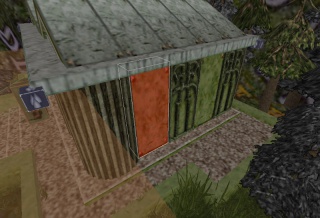Brush
Contents |
Introduction
Brush is a simpliest geometry unit in a level. Other geometry units are misc_model and patches.
Brush is consecutive solid geometry. It defines a form made of it's sides and a volume which is anyting inside. Brush is using this rules:
- Minimum 3 sides
- Each side is plane forming polyhedron (maximum 16-24 corners)
- If slice brush by the plane of any of it's sides, whole brush will be on one side of the plane
Since brushes define volume, they are used for water, lava and slime.
Texture Projection
Since brush internal structure dont have vertexes, it doesnt have texture coordinates, it is using texture projection which follows this rules:
- Texture get projected from axis planes (XY, XZ, YZ) to a sides of the brush, optimal projection plane is selected by brush side orientation.
- Texture is rotated by plane's rotate parameter
- Texture position is scaled by plane's stretch (x and y)
- Texture position is shifted by plane's offset (x and y)
- Using texture dimensions, positions is converted to texture coordinates
This leads to a number of limitations applied for brushes:
- Rotating texture is tricky as no rotation origin is specified, this leads to texture breakage when brush is rotated to small angles (90 degrees rotation work fine)
- There are number of texture projection commands to make life easier on brush texturing
- Texturing may broke if texture resolution is changed (there is material trick to bypass that)
With limitations, there is a number of benefits:
- No texture coords = no UWV unwrap work
- A little easier to control texture detail
- No texture breakage when model is sliced
- Can scale model with keeping original textures detail
- Can modify brush in various ways with no texture breakage (make wall longer for example)
Volume properties
Brush volume have several properties.
1. Brush contents
This physics-related contents of the brush which could be one of the followed values:
- Solid
- Non-solid
- Water
- Slime
- Lava
- Sky (not used on Blood Omnicide)
Brush contents are defined from the materials brush have on it's sides. Usually all brush sides must have same contents (mixed contents will give a compiler warning and will lead to bugged behavior).
2. Brush transparency
This is not real transparency but whether brush can block other visible stuff. Opaque brushes will make a split in VIS data, so geometry and entities behind it can be culled out for sake of speed. Detail brushes and bmodels are always 'transparent'.
If brush have sided which is marked detailed or transparent, it will be transparent too.
